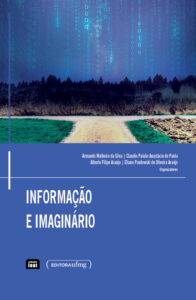Area: Communication
Collection: IEAT – Institute of Advanced Transdisciplinary Studies
ISBN: 9786558581062
Year | Edition: 2024
Pages: 321
Publisher: UFMG
Dimensions: 2.00 x 22.50 x 15.50 cm
Weight: 0.55 g
Considering reason as the only means of accessing truth was responsible for relegating the imaginary to a marginal role, leaving aside intellectual processes that which, since time immemorial, has been responsible for giving meaning to the world and to human experience. However, the complexity of contemporary society has revealed a mistakenly limited understanding of the scientific perspective on imagination and has required a deeper understanding of the views dedicated to analyzing humanity’s representations of the cosmos, a condition that has been responsible for the (re)recognition of the imaginary as a guiding element in attempts to understand reality.
In the field of Information Science, this openness to understanding the influence of the imagination that creates fictions on the understanding of the vast universe that involves information in contemporary society has been developed through various perspectives and through different techniques. An allegorical view of this reality allows, for example, to associate the present century with ancient and modern communication deities – such as Exu (Yoruba), Legba (Fon) or Hermes (Greek) –, personalizations of communication, movement, exchange, circulation, skill, cleverness, malice and ginga (whether represented by capoeira or winged sandals), but also of cunning and trickery. References, in a symbolic reading of the 21st century, not only to the speed of change engendered by the development of information and communication technologies, but also to disinformation and fake news, understood as the dissemination of false or inaccurate information with the intention of confusing and manipulating.
Inspired by the multi-perspective perspectives of studies on the imaginary, this book presents some theoretical bases for exercising a symbolic view of reality and the fields of information and communication. It is considered that this work, by offering ways to understand the dynamics and use of symbols, myths and the imaginary from a scientific perspective, the application of some investigative techniques and the care that this application requires, may contribute to the learning and promotion of a symbolic hermeneutics of infocommunicational phenomena.

